
2018年9月12日,“真实的启示——蒲国昌王华祥双个展”将在贵州美术馆开幕。此次展览由中国美术家协会、中央美术学院、国际学院版画联盟、中国美协版画艺术委员会主办,贵州画院(贵州美术馆)承办,陈争、朱晴策划,将展出至9月24日。

邀请函
真实的启示——蒲国昌 王华祥双个展
策展人:陈争
执行策展人:朱晴
主办单位:
中国美术家协会
中央美术学院
国际学院版画联盟
中国美协版画艺术委员会
承办单位:贵州画院(贵州美术馆)
支持单位:《画刊》杂志
媒体合作: 中央美术学院艺讯网 雅昌艺术网 人民网 新浪网 北京文艺网
展览时间:2018年9月12日-9月24日
开幕式:2018年9月12日 下午2:30
研讨会:2018年9月12日 下午3:30
展览地点:贵州美术馆1楼展厅
地址:贵州省贵阳市云岩区北京路168号
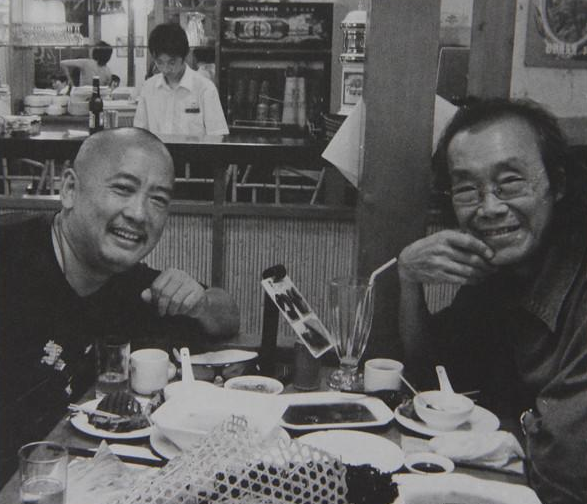
王华祥与恩师蒲国昌在一起 2008
蒲国昌与王华祥:真实的启示
Pu Guochang and Wang Huaxiang: True Revelation
(1)
蒲国昌,1937年生于成都,1959年毕业于中央美术学院版画系,后分配至贵州,从艺愈六十年。数年前,我们曾在北京有过短暂的愉快的交谈,他受到中央美术学院众人的敬重,彼时令我印象深刻的是这位艺术家的激情和真实,他说在家里每天都要打篮球。不想如今有机会,得以为先生做一场展览。今年5月份,我抵达贵阳首次拜访先生,这一次,我认识到他的深沉和力量。黔贵一带,“蒲国昌”三个字不仅是一个名字,他是德高望重的长者,是德艺双馨的艺术大家,也是有着些许传说的神秘人物。这些都是他真实的多面,同时,他更是一个赤诚的艺术之子,他被自己才华横溢的儿子蒲菱形容为“艺术守望者”。
Pu Guochang was born in Chengdu in 1937. After graduated from the Printmaking Department, China Central Academy of Fine Arts (CAFA) in 1959, Pu Guochang was assigned to Guizhou and has been engaged in artistic creation for over six decades. A few years ago, we had a brief yet pleasant conversation in Beijing. He is a respected figure at CAFA. I was particularly impressed by his artist’s passion and true character. He told me that he plays basketball every day. I never thought that I’d have a chance to be a curator of his exhibition. In May of this year, I went to visit him in Guiyang. This time, I was impressed by his composure and strength. In Guizhou, “Pu Guochang” is not just a name. He is known as a respected elder, an artistic master reputed in both virtue and art, and a mysterious figure with some legends. These are all the true parts of him. Meanwhile, he is more of a true son of art. He is described as “Watchman of Art” by his brilliant son Pu Ling.
王华祥,1962年生于贵州,1981年毕业于贵州省艺术学校,1988年毕业于中央美术学院版画系,现任该系主任,身兼多个要职。蒲国昌是他在贵州省艺术学校的恩师,因看中其才华被“特招”入学。26岁他以家乡为题材创作的《贵州人》享誉美术界,三十年来在美术、美育领域硕果累累。他不停的逻辑反转,迎时代浪潮而上,性格中倔强的那部分被认为承自贵州山水,在当代艺术界独树一帜。他热爱生命给予的一切,“把古典、现代和当代艺术都当成风景来欣赏,当成必修课来学习,我相信,掌握了西方已失去的传统和了解了西方现代、当代艺术的中国人,有理由成为未来新艺术的创造者。”
Wang Huaxiang was born in Guizhou in 1962. He graduated from Guizhou Provincial Art Academy in 1981 and from the Printmaking Department of CAFA in 1988. Except for serving as Director of the Printmaking Department of CAFA, Wang Huaxiang also holds several key posts. Pu Guochang is his respected teacher in Guizhou Provincial Art Academy. Pu Guochang sensed his talents, which enabled him to be “specially enrolled” by the academy. At the age of 26, Wang Huaxiang created Guizhou People themed by his hometown and began to fame in the art circle. Over the past three decades, he has received fruitful results in the field of fine arts and aesthetic education. He keeps seeking logical inversion and greeting the tide of the times. Some sort of stubbornness in his character is thought to be borne from the landscape in Guizhou, making him unique in the field of contemporary art. He loves everything that life offers. “I take classical, modern and contemporary art as landscapes for appreciation and as a compulsory course for learning. I believe that Chinese people who master the lost traditions of the West and understand Western modern and contemporary art have reason to become the creator of new arts of the future.”
蒲国昌,王华祥,两个人,犹如两簿厚书,翻开来,是二十世纪后半叶以来的中国艺术之路。
Pu Guochang and Wang Huaxiang are just like two thick books, which present, after being opened, the course of Chinese art from the second half of the 21st century.
(2)
回溯二十世纪初始,西方艺术的影响经过了几代人的实践,得出正反两方面的经验。徐悲鸿、刘海粟、林风眠等人本是以中西画兼长的全面型画家,画风标新立异。黄宾虹、齐白石、张大千、岭南三杰等大家以传统笔墨功底见胜,加以吸取西方技法的某些因素,突破窠臼自成一风。通过他们的积极模仿和技法融合,西方艺术技法增进了中国绘画尤其是人物画的表现。到了三四十年代,一方面版画、漫画风靡,肩负国家宣传使命,有李桦、王琦、古元、叶浅予等人以人文关怀为己任,开创了沿续至今的中国版画、漫画格局。另一方面,中国画家如傅抱石、关山月,油画家如吴作人、司徒乔,皆以写生风土人情入画,形成独特的画风饮誉艺坛。1949年建国初期以后,中国美术界基本上全盘抵制西方近现代美术,而受苏联和19世纪俄罗斯美术的影响,表现主义、后印象主义、立体主义等现代艺术各个流派被认为是腐朽、没落的艺术并加以排斥。这与当前的局面全然不同。在当时,高等艺术院校培养了新中国第一批较系统掌握油画基本技法的艺术家,董希文、罗工柳、靳尚谊、詹建俊、侯一民等人在大型历史画、肖像画等方面卓有成就,具有杰出的构图创作能力。五十年代中期国家鼓励民族艺术有批判的吸收外来艺术,吴冠中、石鲁等人在画面上开拓出前所未有的新境界。至此,关于东西方艺术能否结合、传统与现代之间的和谐与统一路径的探索已经有了成功的案例。五十年代末期,中国文艺界从历史动荡的含混中渐渐苏醒。这种苏醒的迹象给给中央美术学院师生带去春日般的希冀,当然,乌云并不会立刻驱散,时代的高压与曙光并存——
Looking back to the art development since early decades of the 20th century, the influence of Western art has been exerted on several generations of Chinese artists and has resulted the experiences in both positive and negative aspects. Artists like Xu Beihong, Liu Haisu and Lin Fengmian, etc. were well-rounded painters who are good at both Chinese and Western paintings and their painting styles are off-beat. Such masters as Huang Binhong, Qi Baishi, Zhang Daqian, and Gao Jianfu, Gao Qifeng and Chen Shuren (three representatives of the “school of Lingnan”) were particularly prominent in traditional way of painting, and broke through set patterns to form their uniqueness in painting. Through their positive imitations and technique integrations, Western art techniques improved the expression of Chinese paintings, figure paintings in particular. On the one hand, by 1930s and 1940s, printmaking and comic arts became popular. Shouldering the national mission of publicity, some artists like Li Hua, Wang Qi, Gu Yuan and Ye Qianyu, etc. took humanistic care as their duties and created the printmaking and comic patterns that still exist today. On the other hand, Chinese painters like Fu Baoshi and Guan Shanyue and oil painters like Wu Zuoren and Si Tuqiao all created paintings by sketching life customs and practices, formed their unique painting styles, and became renowned in the art circle. After the founding of the People’s Republic of China in 1949, the Chinese art circle basically boycotted all Western contemporary and modern art, and various modern art schools, such as expressionism, post-impressionism, cubism 1949 were rejected as rotten and declining arts. This was completely different from the current situation. Back then, art institutes of higher learning cultivated the first-batch Chinese artists who systematically mastered the basic techniques of oil painting, including Dong Xiwen, Luo Gongliu, Jin Shangyi, Zhan Jianjun and Hou Yimin, etc. They made distinguished attainments in large historical painting and portraiture, etc. and had outstanding composition and creation ability. In mid-1950s, the state encouraged critical absorption of foreign art by national art. Such artists as Wu Guanzhong and Shi Lu opened up unprecedented new realms in picture. At that point, successful cases became available in exploring the combination of eastern and western arts and the harmonious and unified road between traditional and modern arts. In late 1950s, the Chinese art circle awakened gradually. The sign of such awakening brought a hope of spring to teachers and students of CAFA. Of course, dark clouds would not disperse immediately. The artists back then felt heavy pressures of the times, but they also saw the dawn.---
蒲国昌正是在这个时候求学于中央美术学院。“我刚刚毕业,那个时候是困难时期,总是饿肚子,为了压制饥饿,我一边吃饭一边研究隶书和印章,这样就能忘了饥饿。感谢那个时候饿饭,我这一辈子的审美取向,就是像汉砖里具有力量的线条,线条中饱含金石味道,在那个时候打下了基础,”蒲先生这样回应并感慨,“无心插柳,形成了一辈子审美的起点、基础、取向”。
Pu Guochang studied at CAFA at that moment. “I just graduated. It’s the tough time. I was starved often. In order to suppress the feeling of hunger, I studied clerical script and stamps while eating. By doing so, I would forget the hunger. I thank those hungry days, which was the building block for my aesthetic orientation in my life, just like a line of strength in a Han brick, in which the taste of golden stones is filled,” said Mr. Pu, “unintentional habits helped shape the starting point, foundation and orientation of the aesthetics all my life.”
纵观蒲国昌一生:童年随着奶妈看川戏,不顾父亲反对弃医从艺,是为刚琢;50年代离家北上,又自毕业南下贵州,是为跌宕;60年代凭着对贵州单纯并诚挚的热爱,形成新的审美基点,并收获与夫人董克明的爱情,与田世信、董克俊、尹光中等结为挚友,是为蛰伏;伏久者,飞必高,70年代在教学中发展和丰富艺术思维,也是这一时期特别看重来应试的王华祥并坚持招入学校;1985年“十人半截子美展”李可染、吴冠中等名客如云,成为贵州现象的主力军之一,是为惊蛰。同时,他坚持寻找意义,1982年黑白木刻《童年的梦》《宇宙》,1983年木刻《佛》,1985年版刻组合组品《召唤》,1986年纸本设色《太极》系列,1987年《风情闹市》系列,它们肆意的在模仿中去接近自己心中灵动的那一点。逐渐的,线条和语言成为主观表现和创造,此时的蒲国昌充满了感恩之情并内心宁静,进入了自我构建的艺术之域——
Looking at the entire life of Pu Guochang, we could find the following tracks. In his childhood, Pu Guochang watched Sichuan Opera with his wet nurse. Despite his father’s objection, he abandoned medical science for art and started his artistic life. In 1950s, he went to the north from the south and then to Guizhou in the south. This was the period of ups and downs of his artistic life. In 1960s, he showed his love to everything of Guizhou with his simple and sincere emotions, helping him generate a new aesthetic base point and reaped his love with his wife, Ms. Dong Keming, and his friendship with Tian Shixin, Dong Kejun and Yin Guangzhong, etc. This was the dormant period of his artistic life. Long period of sedimentations was bound to lead to his success. His teaching experience in 1970s developed and enriched his artistic thinking. Also during this period, he sensed the talents of Wang Huaxiang and insisted on enrolling him to the academy. In 1985, the exhibition called “Banjiezi Art Exhibition” of ten artists including Pu Guochang, Li Keran, Wu Guanzhong, was organized. This experience made Pu Guochang become one of the main figures in the “Guizhou Phenomenon”. This was the period of his awakening in art. Along the same time, he kept looking for significance. He created his black and white woodcut works titled Dream in childhood and Universe in 1982, woodcut work titled Buddha in 1983, printmaking and woodcut combined work titled Call in 1985, paper coloring series of works titled Tai Ji in 1986, and his series of works titled Bustling City in 1987. While creating these works, he tried to approach the point of inspiration in his deep heart in imitation. Gradually, line and language became his subjective expression and creation. During that period, Pu Guochang was full of gratitude and in peace of mind, and entered his self-constructed art realm.---
艺术家说:“?”
我说:“?”
艺术家说:“!”
我说:“!”
于是
我成了艺术家
Artist said: “?”
I said, “?”
Artist said: “?”
I said, “?”
So,
I’ve become an artist.
宁静而满足的心灵,不会乐于斗争与甘于迷茫,而是不断将自己的愿望放大,在历史、变化、新语言认识的更大格局中寻求启蒙所必须的心智之光——这是90年代起之后的蒲国昌,有着独立的、批判性的当代精神,敢于直面自我(《梦者》系列),直面西方当代与前卫艺术的冲击(《石榴》系列,《机器时代》系列,《呼吸》系列),直面东方审美趣味与形式并变革(《花鸟?猫》系列,《文字系列》),直面社会关系与群体异化(《人人》系列,《须发故事》系列)……他毫不避讳谈及表现主义对自己的影响,已经形成蒲式符号的蒲国昌,年过八十依旧时尚前卫,有着当今人们稀有的高远与清醒。我们并不能简单的将蒲氏符号简单认为是其个人精神世界的表现,其章法、技巧、色彩、线条同时带有理智思辨、有对秩序的解读、对规则的愿景、对生命的敬畏与欢快之情。相信更多的观众能看出蒲国昌画中展示的永恒的品质。这种对永恒品质的追溯,通过直觉式的线条、梦境般的画面、独白式的台词、以及宗教符号等手段,进入到一切伟大的生命与真理之中。
A peaceful and contented mind would not be willing to struggle and lost in confusion but to constantly magnify his desires and seek the light of mind necessary for enlightenment in the larger context of historical changes and new language understandings. This was Pu Guochang after 1990s with an independent and critical contemporary spirit. He dared to face himself (Dreamers series), face up to the impact of Western contemporary and avant-garde art (Pomegranate series, Machine Age series and Breath series), accept changes in oriental aesthetic interest and form (Flowers and Birds & Cats series and Character Series) and embrace social relations and group alienation (People series and Beard and Hair Story series). … He spoke openly about the impact of expressionism on himself. Having already formed his own symbols though, Pu Guochang remains fashionable and avant-garde even he’s already over eight years old. He has the loftiness and soberness that are rarely seen among young people. We couldn’t simply regard the symbols of him simply as the manifestation of his personal spiritual world. His painting techniques, skills, colors and lines are sort of the expression of reasonable speculation, interpretation of order, vision for rules, awe of life and joy of love. I believe that more audiences could sense the quality of eternity shown in his paintings. This retrospection on the quality of eternity enters all great lives and truths through intuitive lines, dreamy images, monologue lines, religious symbols and other means
(3)
1978年贵州省艺校首次招生,才学了半个月绘画的王华祥可以说是“不会画”的一名考生。据他回忆,自己画的比别人差,本来已经落榜了,后来突然被叫去重新考试,被录取带了些侥幸。却不知,他首次考试回去后,身为考官的蒲国昌爱他之才,在多位老师反对的情况下仍极力保荐,争取到复试的机会。为了招入王华祥这名学生,蒲国昌一度饱受非议和压力。我们很难说如果没有蒲国昌慧眼识珠,就没有后来“抱虎下山”的巨匠王华祥。美术史研究主张历史不可假设,过去百年的美术史又何尝不是一种宿命的选择?改革开放给艺术发展带来新的生机,艺术商业成功之便宜使得中国艺术界在没有建立起完整的体系之时即野蛮生长。故而蒲国昌先生言说过“艺术是真的,艺术界是假的”。和二十世纪二三十年代一样,八十年代中国美术又一次面临西方美术的冲击,这一次在资本的裹挟下,一边倒向全盘西化。从积极的方面看,它使得题材、形式和艺术风格上出现了更加丰富多彩的局面,艺术家的个性与主动性更强,艺术语言的种类被扩展。其消极影响,是当代艺术越来越像“百宝囊”,当下的、抽象主义的、表现主义的等一股脑儿塞进去。因此模糊了现代主义的含义,美国著名批评家M.H.艾布拉姆斯在《文学术语汇编》一书中对现代主义的解释是“现代主义的特征因使用者的不同而各异,但是在一点上众多批评家是持有共识的,那就是现代主义不仅跟西方艺术的传统、而且跟整个西方文化的传统实行有意的和彻底的决裂。在这个意义上,现代主义的重要思想先驱都是思想家,他们质疑那些被认为无可怀疑的传统观念。”这些思想家中,有马克思、弗洛伊德、尼采和弗雷泽。我国老一辈的外国文学研究学者袁可嘉教授曾提出过现代派的三条基本艺术主张:重主观表现,重艺术想象,重形式创新。
Guizhou Provincial Art Academy had its first enrollment in 1978. Wang Huaxiang was a candidate who “couldn’t paint” as he only learned painting for half a month. As he recalled, he painted worse than others and already failed in the exam, but he was afterwards called back to take the exam again and was admitted with some luck. He didn’t know that Pu Guochang who was one of the examiners sensed his talents and strongly recommended a chance for his second interview despite of the objection of other examiners. In order to enroll Wang Huaxiang as his student, Pu Guochang was once under a lot of criticisms and pressures. Without Pu Guochang, it’s hard to say whether Wang Huaxiang could become such a giant in the art circle. In studies on art history, it’s generally believed that history cannot be assumed. Is the art history of the past one hundred years not a fatalistic choice? The reform and opening up has brought about new vitality to the development of art, and the cheapness and commercial success of art have allowed the Chinese art world to grow barbarously without a complete system. Mr. Pu Guochang once said, “Art is real but the art world is not.” As with that in 1920s-1930s, the Chinese art in 1980s was faced with the impact of Western art once again. This time, coerced by capital, the Chinese art community was overwhelmingly westernized. Positively speaking, the theme, form and artistic style became more colorful. Artists became more personalized and initiative. The types of artistic languages were expanded. The negative influence was that contemporary art became more like a “treasure bag” containing the present, abstract and expressionistic parts. Therefore, the meaning of modernism was blurred. American famous critic M.H. Abrams interpreted modernism in the book titled A Glossary of Literary Terms, “The specific features signified by ‘modernism’ (or by the adjective modernist) vary with the user, but many critics agree that it involves a deliberate and radical break with some of the traditional bases not only of western art, but of western culture in general. In this sense, the important thought pioneers of modernism were all thinkers who questioned traditional ideas that were considered beyond doubt.” These thinkers included Marx, Freud, Nietzsche and Fraser. As a scholar in foreign literature of the older generation in China, Prof. Yuan Kejia proposed three basic artistic propositions for modernism: emphasis on subjective expression, emphasis on artistic imagination and emphasis on form innovation.
早在1915年陈独秀在《青年》杂志第一期发表《现代欧洲文艺史谭》通常被看作是最早介绍西方现代主义的肇始者,主要介绍了当时盛行的象征主义思潮。五四运动前后,鲁迅、郭沫若等先生以批判和借鉴的态度译介了未来派、柏格森的生命哲学和弗洛伊德精神分析法。从1949年到70年代末,这种西学东渐处于停滞状态。而1978年以后完全相反的是,一波一波的现代主义浪潮被狂热的掀起,现代与当代艺术在中国成为孪生儿,与西式概念不可同日而语。78’年以来的当代艺术进程中,不可避免的出现了诸如机械照搬和盲目效仿等缺点和不足。和从学院南下的蒲国昌不同,从贵阳鸭池河北上的王华祥,天赋中带有现代主义精神,具有否定、批判、决裂的基因,“传统不是我的敌人,前卫不是我的敌人,学院不是我的敌人,敌人不是我的敌人,他们是我思考的对象,就像鱼和水,我因思考而前行。”
As early as in 1915, Chen Duxiu published “Modern European Literary History” in the first issue of New Youth and is often regarded as the pioneer of introducing Western modernism. He mainly introduced the prevailing trend of symbolism at that time. Around the May Fourth Movement, Mr. Lu Xun and Mr. Guo Moruo interpreted and introduced the futurist Bergson’s philosophy of life and Freudianism in a critical and referential manner. From 1949 to late 1970s, this kind of eastward spread of Western cultures was in a state of stagnation. After 1978, it’s completely the opposite situation as modernism was unleashed wave after wave in frenzy. Modern art and contemporary art became twins in China and couldn’t be compared with Western ones. In the development of modern art since 1978, there were inevitable shortcomings and deficiencies, such as mechanical copying and blind imitation. Different from Pu Guochang who went south after graduated from the academy, Wang Huaxiang went north from the Yachi River in Guiyang. Being gifted, Wang Huaxiang has the spirit of modernism and some negative, critical and breaking genes. “Tradition is not my enemy, avant-garde is not my enemy, schools are not my enemies, enemies are not my enemies. They are all the objects of my thinking. Just like fish and water, I move forward by thinking.”
反观王华祥1988-2018三十年创作,大致可将其分为三个阶段:第一个阶段,朴素的自我表现与哲学性塑造,以《贵州人》《近距离》《将错就错》《文化波普》为代表。它们分别实现了彩色木刻技法革命,和对生活现实与文化经典的解构与重构。“将错就错”思想体系具有理想的精神性和美学特征,在偏离中找到存在的真实,在主客观、言语与目的之间寻找符合精神需求的标准,在彼与此间推敲观念与主观价值,王华祥通过写实素描的技术探讨触摸到了艺术形象所指与能指的本质,与语言学的研究不期而遇。这样达到美学层面的技法透析,令时艺术界青年如久旱逢甘露,受益至今;第二个阶段,《风往回吹》《等待花开》《词典系列》以及2015年前的油画作品为代表。作品描绘的生命、呐喊、反讽与黑色幽默,那些人物形象、文字或荒诞的题目,全部指向永恒之物——爱情、自由、生死以及美术史。第三个阶段,《向后的实验》,这是近期的新作,在本次展览首次展出。我在平谷的工作室看到这些作品,语言上它开始关注废旧木料的视觉与情感结构,值得注意的是,这一时期的绘画,技法上更加接近艺术的精神本质。相信观众们会为之震撼,你们会在王华祥的作品中看到古典油画中最为有力量的表现——静穆的伟大。如果说第二阶段的王华祥有着三条命,有着饱满的力量与宣泄不尽的力量,那么如今,这些力量它们“就像海的深处永远停留在静寂里,不管它的表面多么狂涛汹涌”,蕴藏在画面的形体和光感中。要祝贺和感谢王华祥,他将带我们从今天走回希腊时期的单纯与壮美,摄取古典绘画的技术与精神,同时远离《拉奥孔》式的悲剧而享有浪漫主义的激情与瑰丽。
The creation of Wang Huaxiang in the three decades from 1988 to 2018 can be roughly divided into three stages. The first stage was the period of his self-expression and philosophical modeling, represented by Guizhou People, Close Quarters, Over Shoes Over Boots and Cultural Pop. These works represented the technique revolution in colorful woodcut, and the deconstruction and reconstruction of the reality of life and cultural classics. The ideology of “over shoes over boots” is characterized by ideal spirit and aesthetics. It’s to find the truth of existence in deviation, find the standards meeting spiritual demands between subjective and objective and between speech and purpose, and examine the concept and subjective value between this and that. Wang Huaxiang has touched the essence of artistic images that are signified and can be signified through the technique of realistic sketch, which accords with the studies of linguistics. This way to achieve aesthetic analysis of techniques made young artists back then feel like having a rain after a long drought and have been benefited till today. The second stage was represented by Winds Blow Back, Waiting for Blossom and Dictionary series and his oil paintings created before 2015. In these works, the life, scream, irony and black humor depicted, those character images, texts or absurd subjects all point to eternal things, namely love, freedom, life, death, and art history. The third stage is represented by Backward Experience, which was created recently and will be unveiled at this exhibition. I saw these works in his studio in Pinggu. In language, he pays attention to the visual and emotional structure of waste wood while creating these works. What merits our attention is that, his paintings in this stage are closer to the spiritual essence of art in technique. I believe that the audiences would be shocked by these works. You would be impressed by the greatness of solemn, the most powerful expression in classical oil paintings in the works of Wang Huaxiang. If we say that Wang Huaxiang had three lives and had the full strength and the inexhaustible strength in his second stage of creation, then these strengths now would be just like the depth of the sea staying in silence forever, no matter how turbulent its surface is, and these strengths are in the form and light of the images. I would like to congratulate and thank Wang Huaxiang as he will bring us back to the simplicity and beauty of Ancient Greece to absorb the techniques and spirits of classical paintings, and enjoy the passion and charm of romanticism while staying away from the Laocoon type of tragedy.
(4)
近期,蒲国昌画笔不辍,画人、画人像,“总觉得画不够,没画完”。王华祥仍践行着几十年的理想——在古典、现代和未来之间架一座桥。
Recently, Pu Guochang paints ceaseless. He draws figures and portraits. “I always feels insufficient and I haven’t done yet.”
Wang Huaxiang, still lives up to his decades-old ideal of building a bridge between the classical, the modern and the future.
恩师与高徒,泰斗与巨匠,他们是贵州的艺术旗帜与文化符号,经受今生,上下求索。
The mentor and the disciple, or the dignitary and the master are both artistic flags and cultural symbols of Guizhou. They are experiencing this life of ups and downs.
当前,在艺术上我们亟需建立中国标准和价值观。尤其是85新潮以来,美术概念的含混和不确定性已经在学术界扎根,找寻中国现代主义的起点对于恢复体系化的生态系统至关重要,这关系宏观格局下的每一个艺术家个体。
At present, we urgently need to establish Chinese standards and values in art. Particularly since the new trend of 85, the vagueness and uncertainty of the fine arts concept have taken root in the academic circle. Searching for the starting point of the Chinese modernism is crucial for the restoration of a systematic ecosystem, which concerns every individual artist in the macro pattern.
2018年蒲国昌王华祥双个展的举办,始于他们“真实”的属性,以启示并敦促我们寻求当下与未来共同的意义,也是扭转时下格局的一次契机。通过蒲国昌王华祥的启示,建立中国艺术价值观的样板,这是诸君共同的祈愿。
The host of the Double Solo Exhibition of Pu Guochang and Wang Huaxiang in 2018 originated from their “true” nature. It inspires and urges us to seek the common meaning of the present and the future. It’s also an opportunity to reverse the current situation. Through the revelation of Pu Guochang and Wang Huaxiang, it’s the common wish of everyone to establish the model of Chinese art values.
朱晴
2018年9月1日
于北京
Zhu Qing
1st, September,2018
Beijing
艺术家简介

蒲国昌
1937年生于成都,毕业于中央美术学院,受教于黄永玉、李桦、王式廓等艺术大家。现为贵州大学艺术学院教授、硕导,中国美协会员。 作品被选送美国、苏联、日本、瑞典、加拿大、新加坡等10余个国家展出。在美国、台北、北京、南京等地举办个人展。被编入《中国当代美术史》、《中国现代美术全集》、《中国美术六十年》、《现代水墨二十年》、《中国版画百年》、《中国当代美术1979——1999》等三十余种重要艺术史论文献,出有四本个人集。

王华祥
1962年
生于中国贵州
1981年
毕业于贵阳贵州省艺术学校
1988年
毕业于北京中央美术学院版画系留校任教
现为中央美术学院造型学院副院长
中央美术学院版画系主任、教授、
博士生导师
国际学院版画联盟主席
中国美术家协会版画艺委会副主任
中国艺术研究院中国版画院副院长
意大利罗马美术学院客座教授
西安美术学院客座教授
万圣谷美术馆馆长
江苏版画院名誉院长
飞地艺术坊名誉校长
作品展示 蒲国昌

梦者之一 | 纸本设色 | 280cmX136cm | 2004

人人系列之七 | 纸本设色 | 340cmX136cm | 1998

风情·家乡| 纸本设色 | 68cmX68cm | 1984
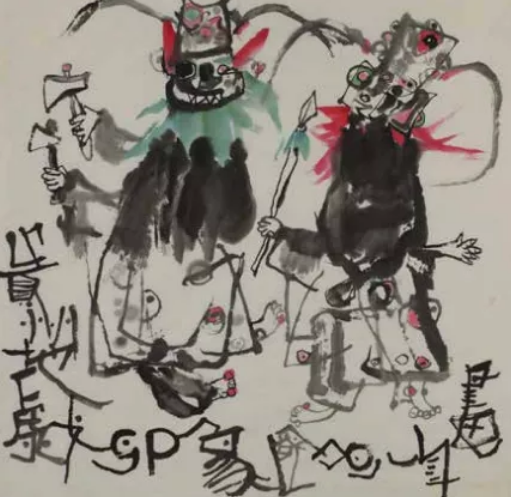
贵州地戏 | 纸本设色 | 68cmX68cm | 1985

惊蛰系列之十| 纸本设色 | 68cmX68cm | 1992
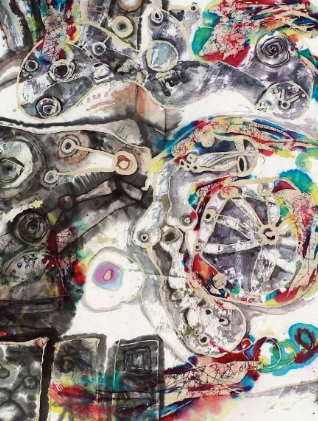
机器时代之一 |纸本设色 | 102cmX102cm | 1992
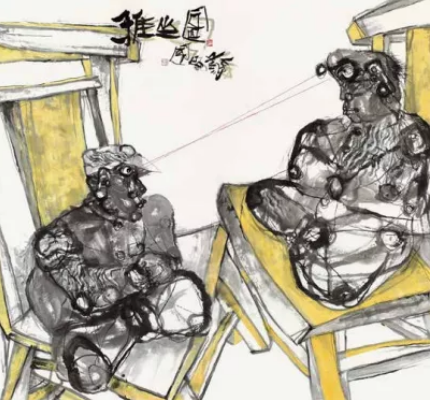
雅座图 | 纸本设色 | 250cmX250cm | 2004

蚊子系列之四十二 | 纸本设色 | 68cmX136cm | 2016
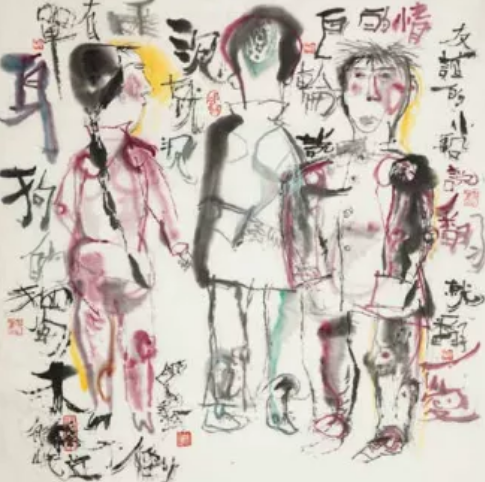
网呓系列之十三| 纸本设色 | 68cmX68cm | 2017

梦者系列之二十二 | 纸本设色 | 124cmX246cm | 2017

扇面之九 | 纸本设色 | 70cmX37cm | 2018
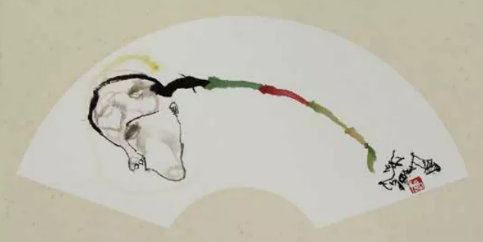
扇面之十 | 纸本设色 | 70cmX37cm | 2018
作品展示 王华祥

贵州人之二 | 彩色木刻 | 36.8cmX27.7cm | 1988
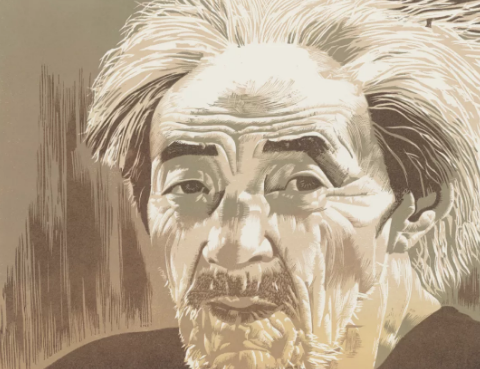
贵州人之一 | 彩色木刻 | 36.8cmX27.7cm | 1988

绿色背景 | 彩色木刻 | 57.7cmX68.8cm | 1990

中国图式 | 黑白木刻 | 42cmX60.7cm | 1996

芭莎记忆 | 布面油画 | 300cmX200cm | 2018
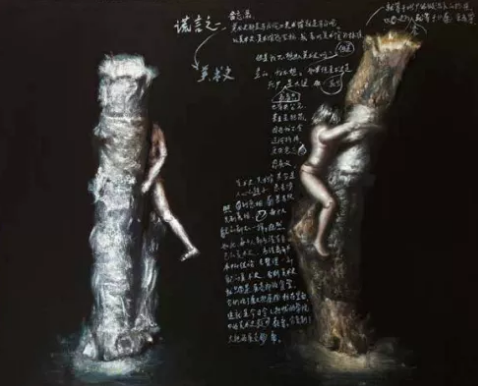
美术史 | 布面油画 | 100cmX80cm | 2015

向后的实验12| 布面油画 | 100cmX200cm | 2018
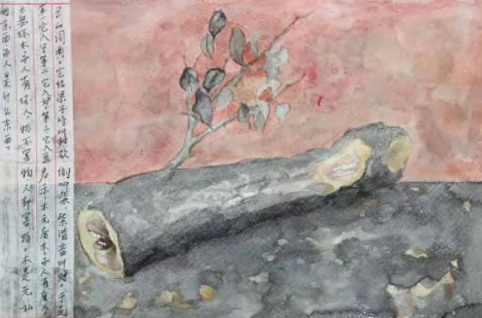
水彩7 | 纸本水彩 | 45.5cmX30.5cm | 2016
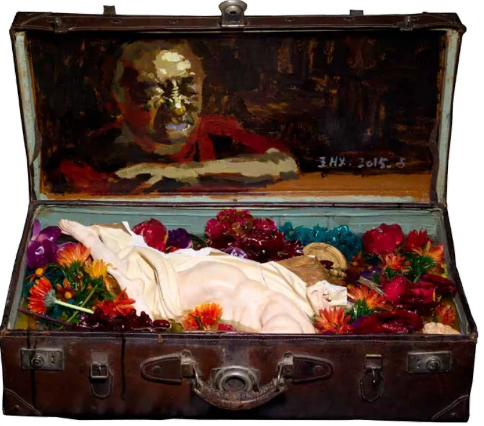
开合地01 | 综合材料 | 85cmX44cmX20cm | 2015
(编辑:王怡婷)








